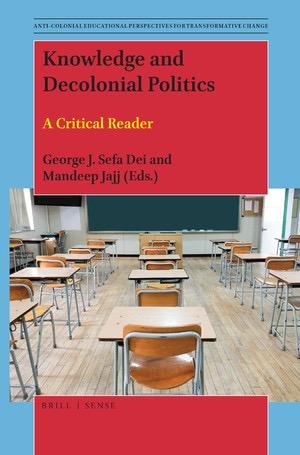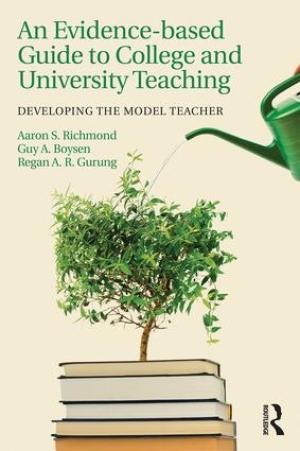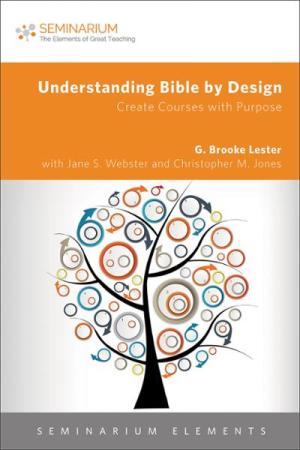Resources by Gerardo Rodriguez-Galarza

Decolonization as an epistemological framework remains a pressing topic. Decolonization challenges the insidious ways in which colonialist ideologies persist as neo-colonial manifestations in economic, political, military, judicial, educational, and spiritual spheres, among others. The series of essays in Knowledge and Decolonial Politics address different challenges within the educational system in Canada. The goal of the book is to address “intellectual colonialism” by decentering Western hegemonic ontology, epistemology, rhetoric, and policies (4-6). As the introduction claims, the “book intends to expose and challenge Western knowledge systems, and dominant political systems, and their role in subjugating, marginalizing, and oppressing local and Indigenous knowledges” (4). After the introduction, the remaining seven chapters each consider a separate issue in need of decolonization with regard to pedagogy: dismissiveness of indigeneity in the curriculum, the classroom, rhetoric of “development,” land ethics, spirituality, spirit-body unity, and indigenous languages. Each of the chapters addresses a topic that is essential to the experience in the classroom, and which requires critical reflection from both teachers and students. As an edited work, the interconnectedness of the chapters sets up a promising framework. The authors point out major weaknesses in the Canadian educational system which fail to prepare teachers and students to engage anti-discriminatory and anti-racist discourses and pedagogies. Despite the legal advancements and robust rhetoric in official documents, much remains to be implemented inside the classroom. The essays call for integrating various ways of knowing that are attentive to non-western cultures in order to challenge meaningfully the Eurocentricity of the curriculum. It would have been beneficial throughout the essays to include specific references to actual indigenous communities and values. Many of the indigenous values mentioned remained in the abstract. Interesting points of contact with African indigenous values were raised in a few of the essays, but were underdeveloped (chapters four, six and eight). Wambui Karanja’s chapter on western-based international intellectual property laws is the strongest and most compelling. The essay challenges current legal frameworks applied to land protection or conservation. It delves deeply into existing international protections for different communities. Karanja explores new possibilities that center indigenous communities and value traditional non-western wisdoms in order to develop a decolonizing framework for collaboration on indigenous land rights issues and knowledge production. Overall, the essays raise important questions for decolonizing the curriculum. The topic of student assessment could have complemented the overall mission of the authors. Nevertheless, the authors demonstrate a deep knowledge of the colonial mindset persisting in neocolonial rhetoric and practices within institutions that claim a liberal concern for marginalized communities and alternate modes of learning. Educational institutions and overseers continually return to practices that re-inscribe colonial settler values through curricular values, status quo teaching strategies, language exclusivity, and the spirit/body dichotomy. While the essays do not recommend many concrete decolonializing strategies, they provide initial reflections on critical topics by naming the colonial injustices embedded in current educational practices, which can stimulate readers to develop further crucial insights identified by the authors.

Richmond, Boysen, and Gurung’s work provides a much-needed resource for new teachers and is valuable to experienced teachers as well. The text is both concise and comprehensive concerning the current state of the Scholarship of Teaching and Learning (SoTL). The authors are psychologists who include their disciplinary insights, as well as provide important examples and resources from disciplines in the sciences, social sciences, and humanities. Chapters one and two set up the context of the “model teacher.” Rather than providing an essentialist answer to the definition of the model teacher, the authors focus on behaviors that produce consistent ideal results in the classroom. Chapters three through five – focused on teacher training, instructional methods, and student learning respectively – are useful to new teachers. As a text for initiating teachers, these chapters provide a reliable systematic introduction to key ways in which teachers interact with students in the classroom. These chapters should be complemented with discipline-specific examples or readings in graduate school teaching programs. Chapters six and seven on assessment of student learning and syllabus construction are the most valuable to teachers at any stage in their career. The insights into the scholarship on assessment is invaluable for the development of class, departmental, and university-wide curriculum. These two chapters are the most practical chapters for reconsidering the significance and purpose of teaching strategies and assignments. Finally, chapter eight examines student evaluations. There are many important insights in this chapter for new teachers on how to engage meaningfully with student summative evaluations. One point of interest was the authors’ statement on the significance of student satisfaction with a course. The authors could have included a lengthier conversation on how to meaningfully address the question of student satisfaction. In the end, “evidence-based” means that one organizes the multiple resources we employ in higher education in a way that substantiates the claims we wish to make. This text provides concrete advice that is useful for the novice; it is also a helpful aid for anyone wishing to mentor others in the art of teaching. An Evidence-based Guide to College and University Teaching employs an engaging hypothetical dialogue with the reader and an interactive approach. There are self-assessments at the beginning and end of each chapter along with hypothetical case studies for each chapter. An appendix at the end presents the uninterrupted self-assessment scale on sixty-four criteria for model teachers. These elements are excellent resources for group discussion in graduate seminars or faculty retreats. This book presents an accessible synthesis of the SoTL literature. It is successful as a gateway resource to the dialogue from the last forty years on pedagogical best practices. The text is limited in terms of the depth that it covers given the myriad topics it addresses, but it provides a solid beginning to engage the conversation.

Lester, Webster, and Jones came together from different academic contexts to create a practical, succinct resource for professors on course design. Lester and his co-authors set out to demonstrate how the principles of Grant Wiggins and Jay McTighe’s 2005 updated Understanding by Design (UbD) model can be applied to theological or religious disciplines in higher education. UbD is a method for designing courses that intentionally fulfill the instructor’s stated course goals from day one. UbD is a learner-centered approach intended to focus on the macro-level objectives of the course. UbD seeks to generate courses where each class is connected clearly with the objectives. Lester finds that UbD works best for course units or individual lessons in his Master’s level courses on the Bible. He provides helpful examples of how he applies the concepts of UbD to his teaching approach or assessment of assignments. While Lester uses the model’s “essential questions” to structure course units, the other authors show how UbD could apply to an entire course. For teachers of undergraduates, Webster’s chapter is very insightful. She provides in-depth examples of the types of assignments she assigns, exam questions and “metaquestions” utilized throughout the course. For her New Testament course, Webster assigns sixteen one- to two-page papers that build on each other and advance students’ writing skills. This is an ideal assignment for any instructor, but it must be noted that all three authors have teaching loads lighter than a typical small liberal arts college faculty member’s teaching load of 4/4 or 4/3. Nevertheless, such assignments constitute a helpful resource for all higher education teachers. The final chapter demonstrates how the principles applied by Lester and Webster aid in developing non-biblical courses. Here Jones writes about his successes and failures as he developed his courses on Rituals and Early Judaism for the first time. The benefit of this chapter is the honest analysis of how he set up his course and his own reflections on the results, including pitfalls for new followers of the UbD model and thoughts on the unique pressures of teaching at a college or university for the first time. The chapter on creating an online course is less effective because half of the chapter is a general defense of online teaching. The other half of the chapter lacks the type of precision one finds in the other chapters since it does not include a specific course as an example. This small volume is a great resource and quick reference for graduate students, new professors, and professors who have had little guidance on teaching. Each author introduces the concepts of Understanding by Design in a succinct and accessible manner that moves smoothly through the thought process of implementing it. For anyone who has been teaching for a longer period of time, the book could be a good resource for modifying current courses. While the work is geared toward courses on the Bible, the concepts can be transferred effortlessly to nearly any other theological discipline.